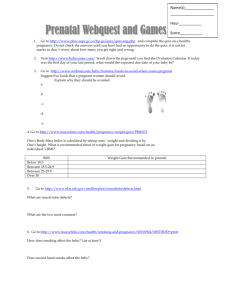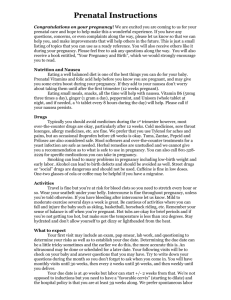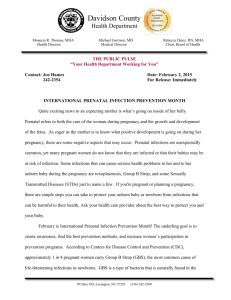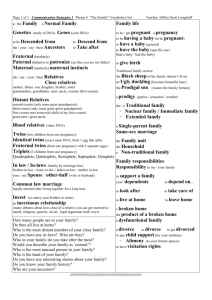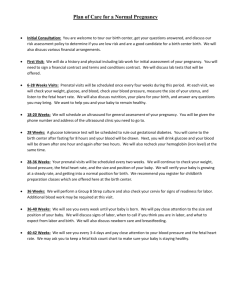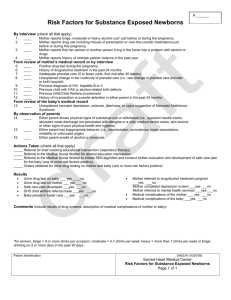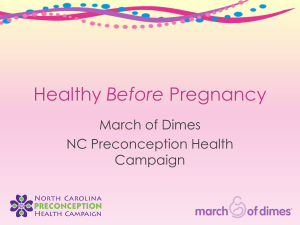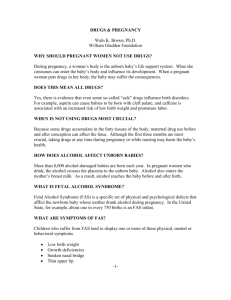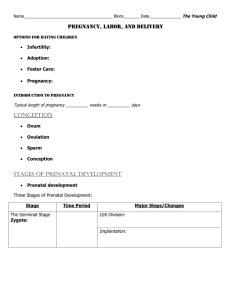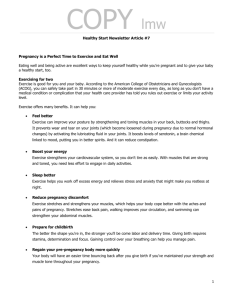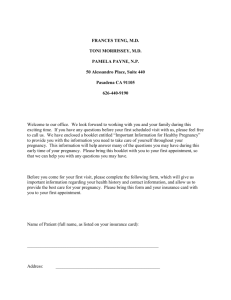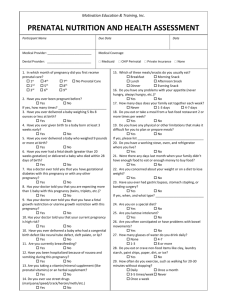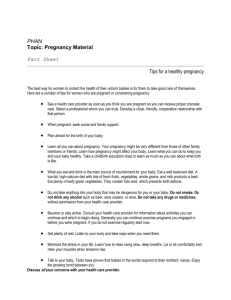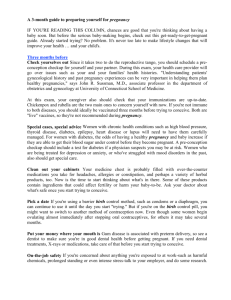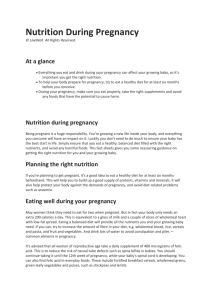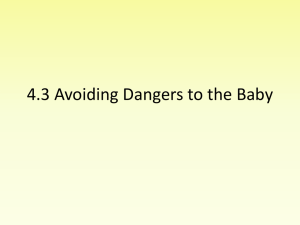Child development-Early stages Through Age 12
advertisement
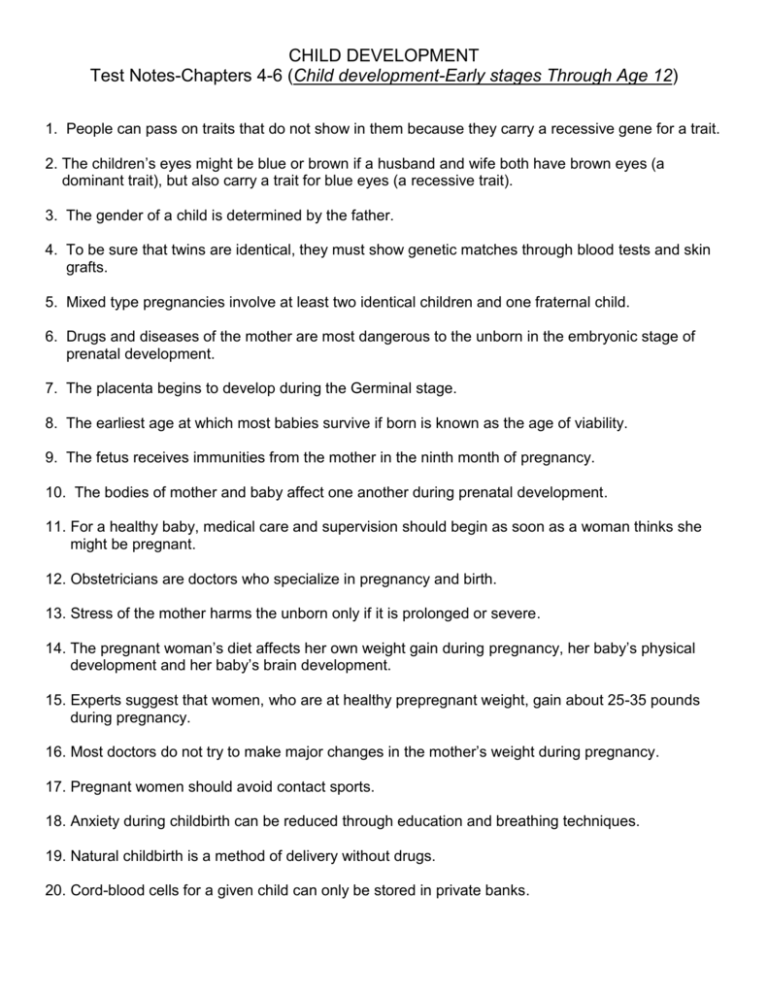
CHILD DEVELOPMENT Test Notes-Chapters 4-6 (Child development-Early stages Through Age 12) 1. People can pass on traits that do not show in them because they carry a recessive gene for a trait. 2. The children’s eyes might be blue or brown if a husband and wife both have brown eyes (a dominant trait), but also carry a trait for blue eyes (a recessive trait). 3. The gender of a child is determined by the father. 4. To be sure that twins are identical, they must show genetic matches through blood tests and skin grafts. 5. Mixed type pregnancies involve at least two identical children and one fraternal child. 6. Drugs and diseases of the mother are most dangerous to the unborn in the embryonic stage of prenatal development. 7. The placenta begins to develop during the Germinal stage. 8. The earliest age at which most babies survive if born is known as the age of viability. 9. The fetus receives immunities from the mother in the ninth month of pregnancy. 10. The bodies of mother and baby affect one another during prenatal development. 11. For a healthy baby, medical care and supervision should begin as soon as a woman thinks she might be pregnant. 12. Obstetricians are doctors who specialize in pregnancy and birth. 13. Stress of the mother harms the unborn only if it is prolonged or severe. 14. The pregnant woman’s diet affects her own weight gain during pregnancy, her baby’s physical development and her baby’s brain development. 15. Experts suggest that women, who are at healthy prepregnant weight, gain about 25-35 pounds during pregnancy. 16. Most doctors do not try to make major changes in the mother’s weight during pregnancy. 17. Pregnant women should avoid contact sports. 18. Anxiety during childbirth can be reduced through education and breathing techniques. 19. Natural childbirth is a method of delivery without drugs. 20. Cord-blood cells for a given child can only be stored in private banks. 21. A cesarean section should be performed because the baby or mother is at medical risk, the baby is in breech birth position or the mother’s pelvis shape will make vaginal birth too difficult. 22. Every germ cell contains 23 chromosomes. 23. A baby receives half of their chromosomes from the mother and half from the father. 24. Despite advances in medical treatments, doctors remain especially concerned about the health of the babies in a multiple pregnancy. 25. The fingerprints, palm prints, and footprints of identical twins are similar but not exactly the same. 26. The genes of fraternal twins are less alike than those of identical twins. 27. Parents-to-be should ask their physicians about any pregnancy-related issues that concern them. 28. Children born to women younger than 36 years of age usually have a less chance of congenital problems than children born to older women. 29. The Rh factor is a blood incompatibility problem that affects few pregnancies. 30. Gestational diabetes is a type of diabetes that can develop during pregnancy. 31. Babies born to mothers who have AIDS do not automatically develop the syndrome. 32. A couple’s closeness in the prenatal stage may set the stage for better marriage relationships and for better parenting. 33. The Lamaze method emphasizes breathing exercises for pain relief during labor and delivery. 34. Labor contractions are involuntary. 35. The third stage of labor includes the delivery of the placenta. 36. Babies are usually born about 280 days from the mother’s last menstrual cycle. 37. The first hour after birth is perhaps the most sensitive bonding time for parents and their baby. Essay question: Provide complete responses to the question or statement. List three presumptive and three positive signs of pregnancy.

